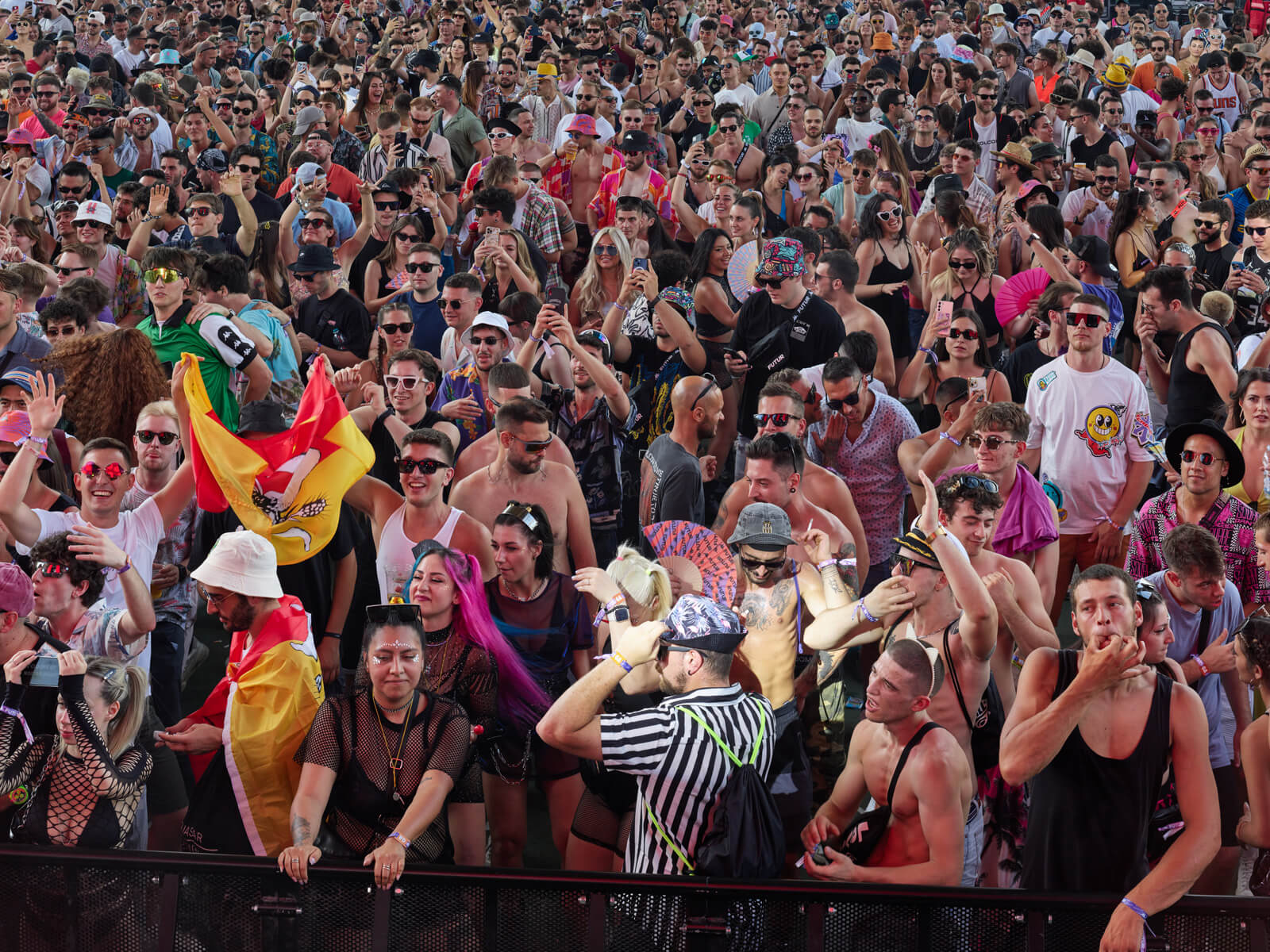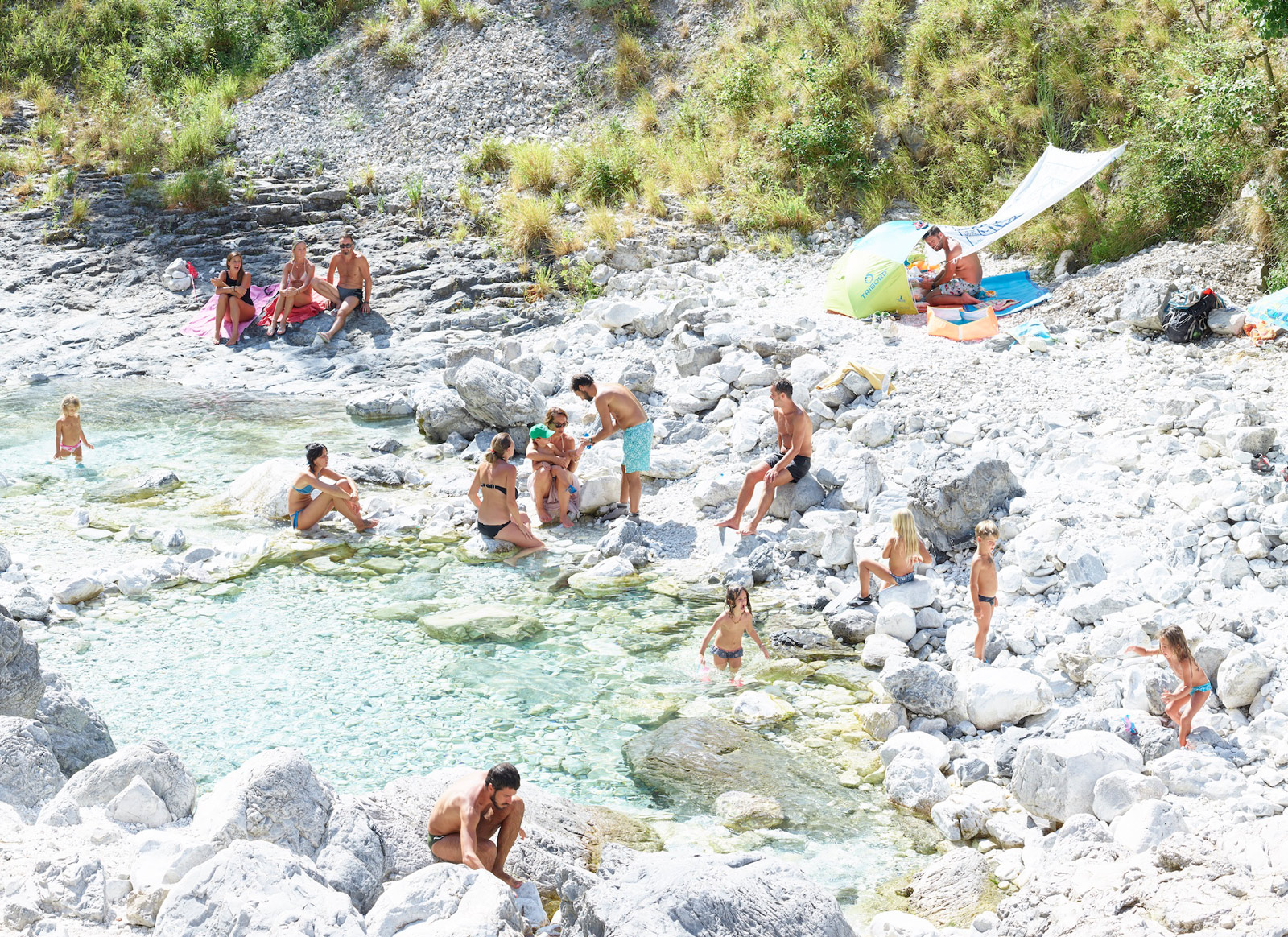Marina Silvello: Your photographic technique implies the use of a large analog camera placed at a certain height in relation to the object to be photographed. This height seems to me to characterize your work as a sort of privileged observatory on the crowd. Why did you decide to adopt this point of view?
Massimo Vitali: I have to say that I have basically made myself quite invisible. In more than 25 year of working on the beaches, nobody has ever come to protest. Of course, over these years I have also been able to notice the different attitudes of people in respect to being photographed. At the beginning, people were not afraid, but they were perplexed, then came the privacy phase, and then at a certain point, with the advent of smartphones, privacy was gone within a week.
Even though I place myself in a high position, I don’t feel superior to the people I photograph. I feel involved and participate in the lives I see and shoot.
My relationship with the subjects I photograph is really strong, as is the relationship established between my collectors and their photographs. The collectors create a relationship with the people in the photos, get to know them and maybe even speak to them.
There was one day when, while standing on top of my tripod on the beach, I picked up a small camera and started to take pictures among people. This approach was not well received, people felt uncomfortable. So, it is important to maintain a certain distance to prevent people from feeling too exposed. Moreover, this elevated point of view allows me to include many other elements, besides the people in the scene.











